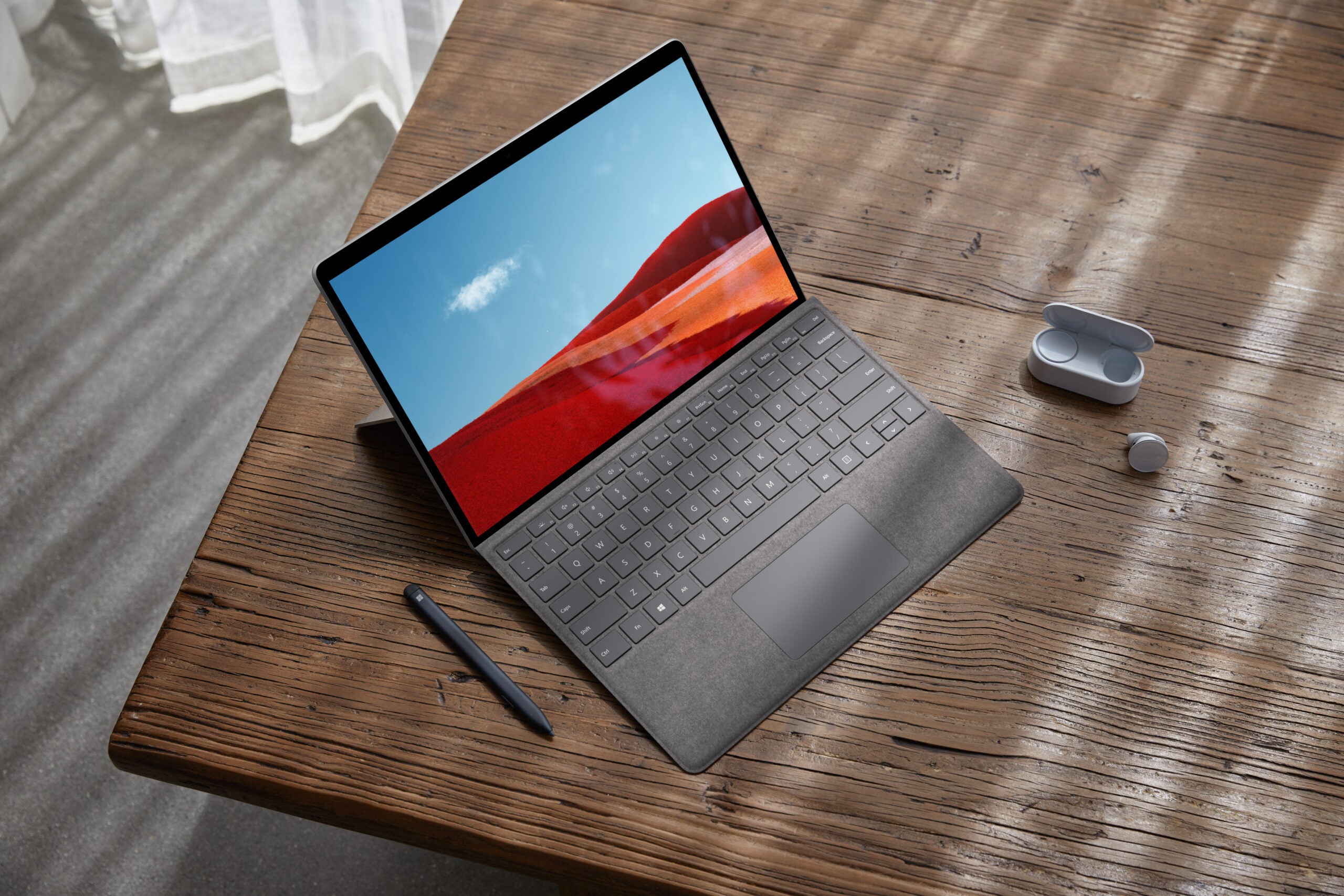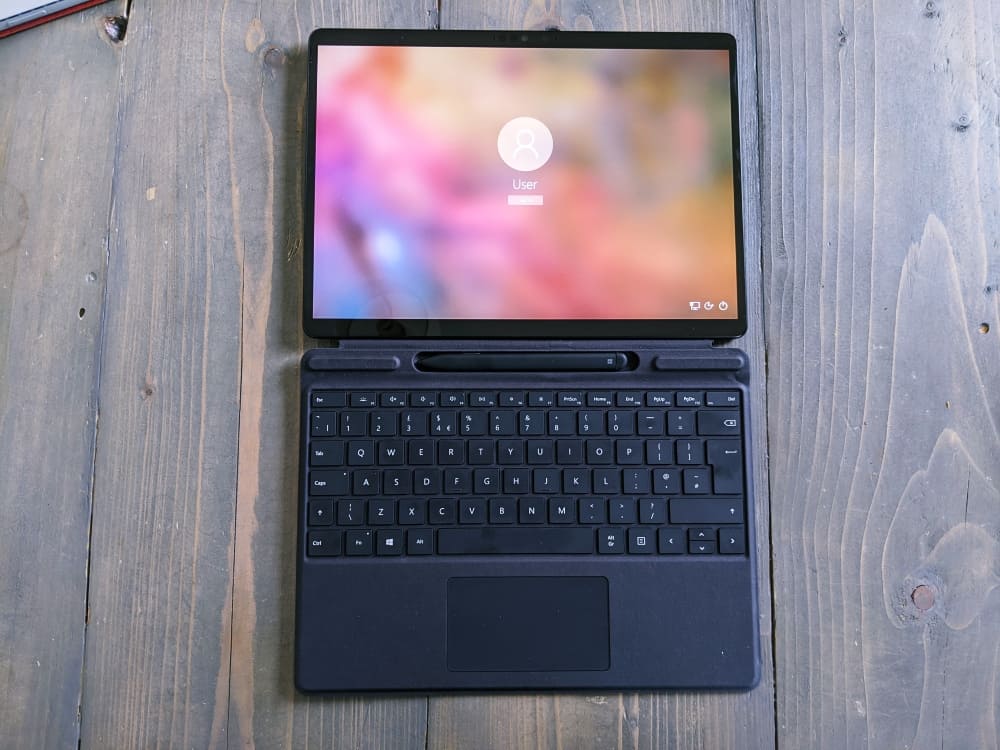

The kickstand is sturdy and lets you position the Surface Pro X in studio or laptop mode, but it didn't prevent the tablet from bouncing around on my lap when I typed on the keyboard. To prop up the tablet, you need to manually extend the kickstand (up to 160 degrees) by prying your finger into a side slot and pushing away from you. On the back is a familiar kickstand that operates just like the one on the Surface Pro 7. The black anodized aluminum frame has a stealthy appearance and feels great to hold. The Surface Pro X is as premium as any we've tested. The differences between these devices remind me of the improvements Apple made to the latest 12.9-inch iPad Pro. The Surface Pro X is essentially a slimmer version of the Surface Pro 7 with thinner bezels and rounded corners.

Until then, the Surface Pro X gives us an idea of what it might look like. We're still waiting for Microsoft to refresh the Surface Pro 7's design. Of course, you'll want the accessories, which will bring the total pre-tax price beyond $2,000. If you want the best-equipped tablet, you can spend $1,799 on a model with 16GB of storage and a 512GB SSD. Microsoft also sent us the Signature Keyboard and Slim Pen accessories, which bring the package to $1,768. Our $1,499 review unit packs 16GB of RAM and a 256GB SSD. That brings the total price of the tablet to $1,299, or $1,568 when you add the keyboard and stylus. Expanding the tablet's storage capacity to 256GB costs an extra $300. We've criticized Microsoft for charging a fortune to upgrade storage and it's no different on the Surface Pro X.


 0 kommentar(er)
0 kommentar(er)
